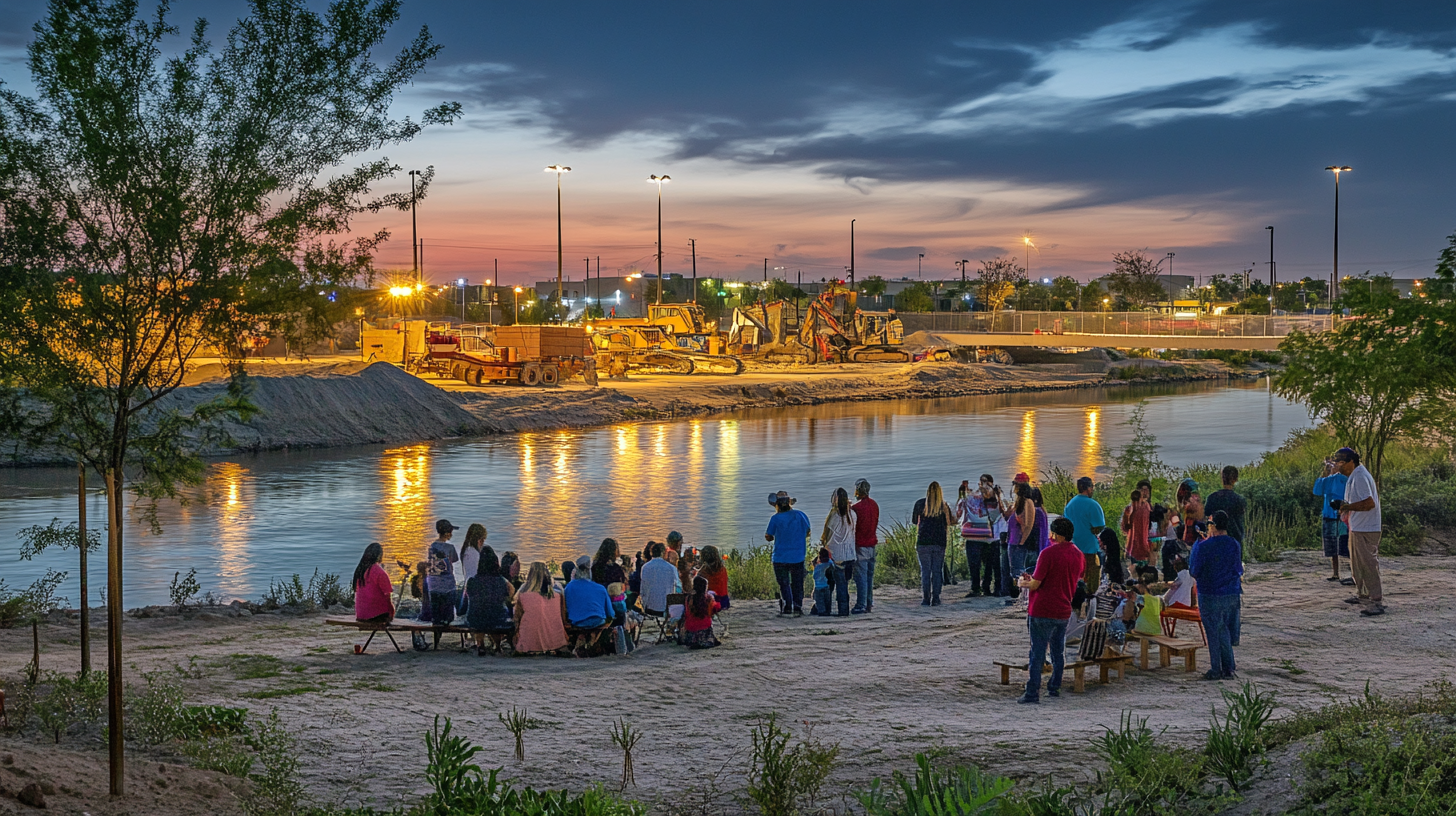Harlingen’s Valley International Airport to Get $1.1 Million Upgrade for New Air Traffic Control Tower
Harlingen, TX – Valley International Airport (VIA) is poised for a significant upgrade with the announcement of over $1.1 million in federal funding designated for the construction of a new, ADA-compliant air traffic control tower. This allocation forms part of a broader $7 million project funded by the Bipartisan Infrastructure Law, aimed at modernizing infrastructure to address current and future demands of air travel in the Rio Grande Valley.
Bringing Modernization to South Texas
Unveiled in a news release by Congressman Vicente Gonzalez’s office, the grant will facilitate a key phase of the airport overhaul, ensuring that facilities are accessible and operationally improved for air traffic controllers and associated personnel. The investment underscores the commitment to not only meet ADA standards but also to enhance the infrastructure that accounts for rising commercial travel demands.
“The Bipartisan Infrastructure Law is continuing to deliver results for South Texas,” Congressman Gonzalez stated. “The construction of this tower is a critical investment not just for Valley International, but for South Texas as a whole, as it will allow our region to meet today’s commercial travel demands while preparing for the future.”
Connecting Past Challenges to Future Opportunities
For Valley residents, the news marks a positive turn in addressing longstanding infrastructure challenges that have previously inhibited the growth potential of the RGV. Historically, VIA has been a linchpin for regional connectivity, linking business travelers and tourists alike to broader Texas and national destinations. However, aging facilities have posed restrictions, necessitating updates that would cater to expanding air traffic needs.
“We’ve seen consistent growth in our passenger numbers over the years, and this new tower will significantly enhance our capacity to manage that growth,” said Maricela Mancha, spokesperson for Valley International Airport. “It’s not just about compliance with regulations; it’s about laying down the foundation for future progress that can bolster our economy.”
Local Impact and Economic Growth
The local impact of this project on Harlingen and the surrounding areas cannot be overstated. Improved airport operations are likely to attract more airlines, unlocking new routes and increasing the ease with which residents and businesses can connect with national and international markets. This development is anticipated to generate new jobs, both directly tied to the tower’s construction and indirectly through increased airport activity.
According to local economist, Dr. Peter Sanchez, “Infrastructure projects like these tend to have a ripple effect on the local economy. Enhanced facilities can boost passenger numbers and cargo service, attracting complementary businesses and enhancing local investment.”
Community Resources and Engagement
With strategic infrastructure projects taking shape, Valley residents are encouraged to stay informed and involved in the community dialogue surrounding this development. VIA plans to host informative sessions and community meetings to ensure residents understand the scope and timeline of the construction process and to provide a platform for public feedback.
“For the project to be truly successful, it’s essential we engage our community in these developments,” Mancha added. “We want Valley residents to see themselves as shareholders in this progress.”
Anticipating Future Implications
While the federal funding signals a boost in VIA’s capabilities, some residents express curiosity about the specific benefits it may usher in. Anticipation surrounds potential partnerships with new airlines, which would bring opportunities for both economic growth and increased tourism – an essential facet for the culturally rich and strategically positioned RGV.
Moreover, the project’s alignment with the Bipartisan Infrastructure Law sets a precedent for future federal investments in the region. This could promote further enhancements in public transportation and connectivity projects, aligning local growth with national infrastructure goals.
Balancing Optimism with Realistic Expectations
Despite the positive outlook, some experts advise a balanced optimism. Success would require efficient implementation, continuous community engagement, and leveraging the airport’s upgraded capacity for sustainable economic advancement.
Furthermore, ensuring the project stays on schedule and within budget will be crucial to maintaining public trust and demonstrating responsible fiscal management. The regional expenditure will need to prioritize additional infrastructure enhancements that continue to sustain the Valley’s growing population and evolving transit needs.
A Path Forward for the Valley
As the Valley International Airport embarks on this path of modernization, the implications for Valley residents remain significant—with the promise of improved accessibility and connectivity supporting a more dynamic economic landscape. As Harlingen and the broader RGV community prepare to welcome these advancements, it reaffirms their place as vital components of Texas’ and America’s broader economic future.
To keep up with ongoing developments, community members can access detailed updates and timelines through VIA’s official website or contact the Maricela Mancha at VIA’s administrative office for more direct inquiries.
This investment in infrastructure not only bolsters the local economy amidst growing air travel demands but also fortifies the connectivity essential to maintaining the strong and vibrant community base that defines the Rio Grande Valley.







